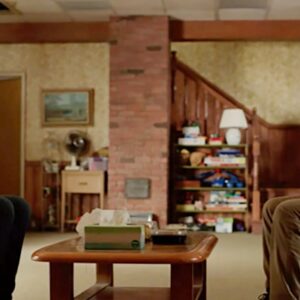As I’ve been watching an eclectic bunch of classic films lately, it occurred to me that I was unintentionally watching a series of what I came to call stealth, or unexpected, crime films. Especially in the sense of the films not being known as stories about murder and mayhem. But they were just that.
Moviegoers in 1960 could almost – almost, I say – count “Psycho” among such films, just for the audacious fake-out that takes place more than a half hour into director Alfred Hitchcock’s classic. Sure, it was a Hitchcock movie, so you knew there would be violent death. But that plot twist. In Hollywood history to that time, had there ever been a more unpredictable murder?
So here are some thoughts on truly unexpected moments of murder, moments that aren’t necessarily the first thing that comes to mind when these movies are discussed today.
Spoilers ahead, obviously, if you haven’t seen these classics.
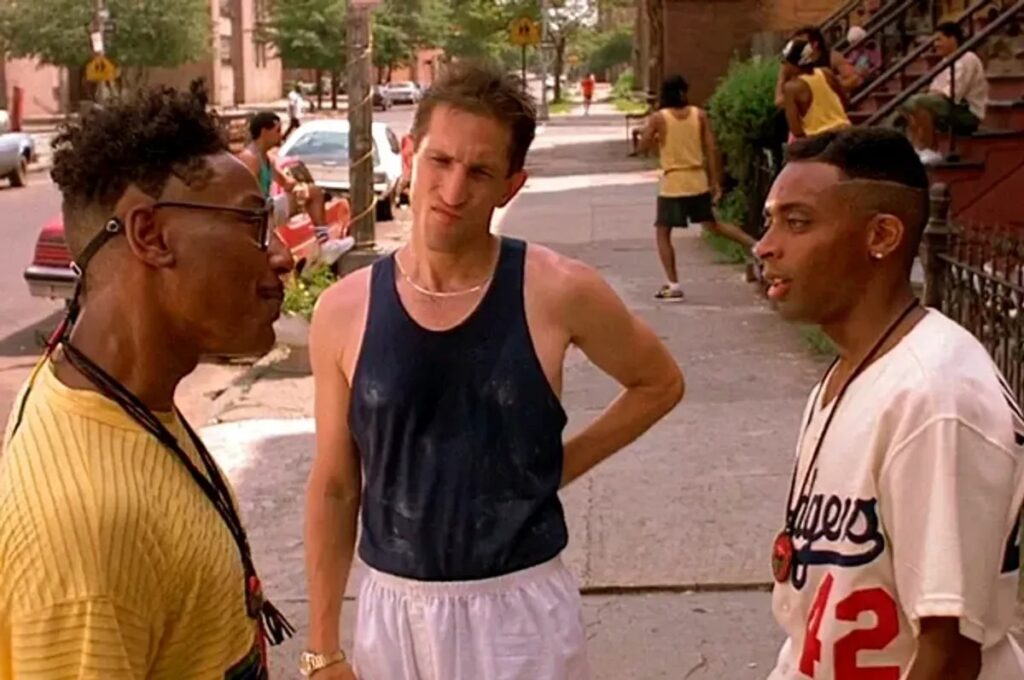
Murder by cop
I saw Spike Lee’s “Do the Right Thing” in a theater in Los Angeles when the movie came out in 1989. I was visiting a friend who worked in special effects and he was at work that day and I went to see the movie solo. For weeks before I went on vacation, the elderly, white editor of the Indiana newspaper where I worked and wrote movie reviews had predicted the movie would cause riots. He wasn’t the only one in conservative circles who felt that way.
But “Do the Right Thing” turned out to be the kind of movie many Americans needed to see right then. For much of its running time, Lee’s film is a character study, as Mookie (the director) ambles around his Brooklyn neighborhood on the hottest day of the summer. Sometimes Mookie is delivering pizzas for usually amiable Sal (Danny Aiello), longtime owner of the pizza place on the block. Often Mookie is tolerating Pino (John Turturro), Sal’s racist oldest son.
Mookie interacts with neighborhood fixtures like Ossie Davis as Da Mayor and Rosie Perez as Tina, the young delivery man’s girlfriend. He navigates his way around complications to his day, like Buggin’ Out (Giancarlo Esposito), who heatedly asks Sal why, in a neighborhood populated by people of color, all the faces on Sal’s Wall of Fame are white.
The characters and situations are so familiar – Mookie wants to get paid; Buggin’ Out wants the low-key justice of racial diversity on the wall of a joint that the residents of the neighborhood keep in business, one slice at a time – and the story is so amiable that we might have been lulled into ignoring the force that is Radio Raheem (Bill Nunn), who walks through the neighborhood with his huge portable stereo on his shoulder. The only tension Raheem brings to the story is the tension when he needs batteries and goes to a bodega owned by a Korean family.
Until.
Buggin’ Out’s demands, Mookie’s frustrations and the agitation of three Greek choruses – the wry old men in lawn chairs, the overlooked Hispanic neighbors, the jokey and irritating (to Mookie) young crowd, including Martin Lawrence – combine with the heat of the day to bring the block to a boil.
When tensions boil over, police arrive and we see, painfully depicted, the movie’s unexpected murder, as the cops use a chokehold to kill Radio Raheem. The violence that follows, after police drag Raheem into their car and flee, is as cathartic as it is upsetting.
Radio Raheem’s murder at the hands of police was painful to watch then and it’s painful to watch now, with its foreshadowing of far too many instances of police violence against Black men and women. And unlike many murders in films, we get no resolution, easy or otherwise. We never see the cops indicted. Like Buggin’ Out, we understand that there will be no justice, in this case no comeuppance for the act. It’s real life, depicted on screen. As a crime film, it is a quirky character story that ultimately leaves us with the bitter feel of sweat and blood and guilt.
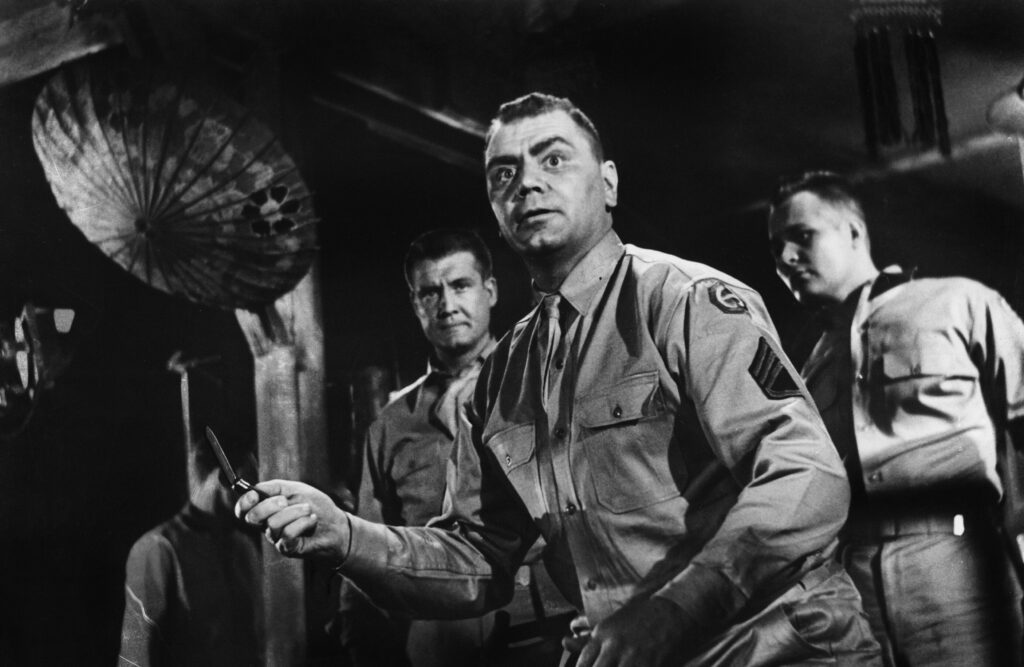
Soap and violence
“From Here to Eternity,” released by Columbia Pictures in 1953, is an unapologetic, high-gloss story of romance in Hawaii in the days before Pearl Harbor. It’s a soap opera of the highest caliber, with a great cast that includes Burt Lancaster as a tough sergeant at an island Army base, Montgomery Clift as a principled fighter-turned-bugler and Frank Sinatra as his buddy, a private who loves to drink in the clubs just off the base. Deborah Kerr is the neglected wife of the base captain, who comes into Lancaster’s orbit, and Donna Reed is a working girl in one of the clubs who hopes to save enough money to get back to the mainland U.S.
What’s well-remembered from the movie is the “lust in the surf” scene between Lancaster and Kerr and how – as fictionalized in “The Godfather” – the real-life pressures of the mob were brought to bear to get Sinatra cast as Maggio. (It’s a story that’s been denied by the filmmakers and cast.)
But while it’s remembered that Maggio meets a bad end, the circumstances leading to his death are less familiar. Early in the film, Maggio runs afoul of a sadistic sergeant, “Fatso” Judson (Ernest Borgnine, in the type of role he would return to throughout his career). Judson becomes obsessed with Maggio and when the troubled private goes AWOL and gets drunk, he is arrested and sent to the stockade, where he is at Judson’s mercy.
Maggio is severely beaten by Judson and the private dies shortly after escaping from the stockade and finding his friends. Clift’s character is bent on revenge for his pal’s death and finds Judson in a dark alley.
There’s not much besides tragedy in store for most of the characters. Some of them wind up dead, and Maggio’s murder goes without recognition for what it was and without justice. In the end, a conversation between Kerr and Reed covers over the injustices of the story with a tragic, invented veneer.
“From Here to Eternity” is a highly polished romantic drama of people on the brink of war, but plenty of death and doom arrive before the real outbreak of the conflict.
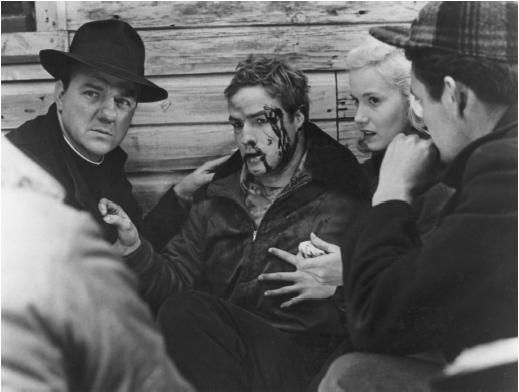
Mob violence
“On the Waterfront” was hardly a stealth project when it was released in 1954. The film, about corruption and violence in longshoremen unions in New Jersey, was widely heralded and hailed. The newspaper reporting that the film was ostensibly based on won a Pulitzer Prize and the work of director Elia Kazan, writer Budd Schulberg and the incredible cast – Marlon Brando, young Eva Marie Saint, Karl Malden, Lee J. Cobb (who we’ll revisit in this article) and Rod Steiger – made this a must-see for moviegoers. And it won eight Oscars!
Of course, Brando’s performance is riveting, even though it has since been unfairly reduced to a “I coulda been a contender” film clip.
But even though we know the angst and anger and outright physical menace of the story, the plot was all set into motion by a murder.
Brando’s Terry Malloy is a one-time boxer who does a favor for Cobb’s union boss, Johnny Friendly. All he has to do is get another dockworker, Joey, to the roof of a neighborhood building.
Joey is thrown to his death by Johnny Friendly’s thugs, of course, and Malloy spends much of the rest of the story trying to stand under all the pressure upon him, from Friendly to the cops investigating crime on the waterfront to would-be crusader Father Barry (Malden). Then there’s the pressure of the guilt he feels over his budding relationship with Saint as Joey’s sister. Saint’s character wants to know how her brother died and find her own measure of justice.
Ultimately, Malloy loses so much but wins on two fronts, by defying Johnny Friendly in court and at the docks.
Like a lot of films that are familiar to subsequent generations for their moments and set pieces, “On the Waterfront” is more than that, from the killing that sparks its story to the violence and comeuppance that caps it.
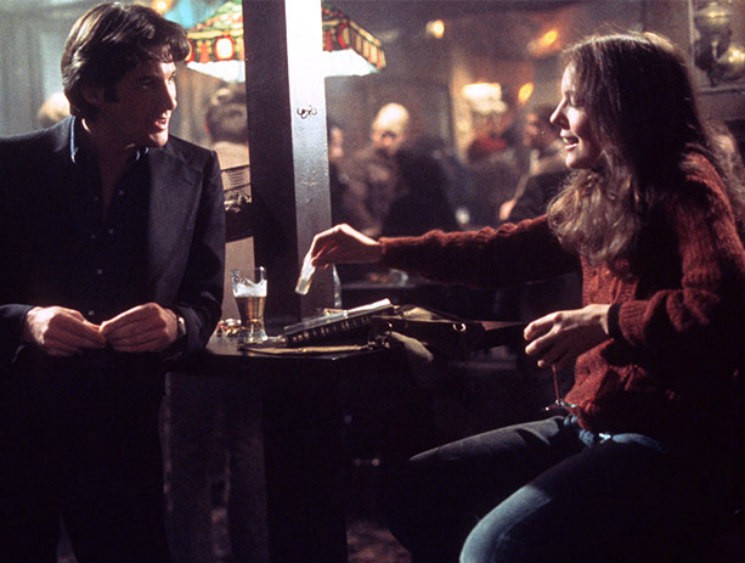
Shocking spiral
There’s a lot that is out of date about the 1977 thriller “Looking for Mr. Goodbar,” based on Judith Rossner’s 1973 novel about the murder of a New York City schoolteacher, Roseann Quinn.
While it’s easy to say that the character of schoolteacher Theresa Dunn, played by Diane Keaton, is self-destructive, the story passes judgment on her early explorations of her sexuality without passing judgment on the men she meets and sleeps with who are, with few exceptions, moving through the same sexually active singles circles.
Since Rossner’s book was so well known, it would be impossible to say that moviegoers couldn’t guess Theresa’s ultimate fate.
But the surprise of seeing Keaton, so familiar from vulnerable roles in “The Godfather” and “Annie Hall,” in such a downward slide still shocks.
Theresa, a young teacher in a school for the deaf, begins a sexual odyssey with her older college professor and continues with a hot-headed boyfriend and an earnest welfare worker. She’s trying to shake off the influence of her domineering father and constant comparisons to her sister, played by Tuesday Weld.
As Theresa moves deeper into the life of a questing and questioning young woman in 1970s New York City, the movie seeps with foreboding. By the end, it’s all too obvious what her fate would be. And like many films from the time, there’s no indication of any kind of ultimate justice.

Hidden detective, crouching demon
There’s almost certainly no film that seems less like a crime film than “The Exorcist.” William Friedkin’s 1973 adaptation of William Peter Blatty’s 1971 best seller – which in paperback had one of the creepiest covers of the day – is famous and rightly so. It’s one of the best films of its era and one of my favorite films of all time.
But there’s a subplot in “The Exorcist” that is often forgotten. Everyone who’s seen the movie remembers the plight of young girl Regan MacNeil, who’s living in D.C.’s Georgetown neighborhood with her mother, actress Chris MacNeil, while her mom films a movie directed by her friend, Burke Dennings.
But Regan starts acting out – telling an astronaut at a party that he’s going to die in space – and having violent seizures that rock her bed. As horrifying incidents escalate, Chris exhausts every medical and psychological remedy and turns to the old Catholic ritual of exorcism, and Father Karras and Father Merrin arrive.
We all remember that the exorcism works and the toll that it takes on the priests and the MacNeils. But there’s a little remembered subplot that allows the movie to fit into my unexpected crime movies subgenre.
When director Dennings is killed in a fall down steep concrete steps behind the MacNeils’ home, homicide detective William Kinderman arrives. As played by Lee J. Cobb, veteran not only of “On the Waterfront” but numerous crime dramas, Kinderman is a detective type familiar to viewers. There are echoes of Columbo in his roundabout ways of approaching his investigation. Kinderman is prone to seemingly wandering off topic with his conversational forays but always returns to his investigation.
In his first conversation with Father Karras (played so well by actor and playwright Jason Miller), Kinderman approaches Karras – himself grieving the recent loss of his mother – from two fronts, since Karras is a priest and psychologist who counsels priests. The movie doesn’t explore it very deeply, but Kinderman no doubt talks to Karras in part because he hears not just confessions but might have heard a confession, in legal terms, to the crime.
Kinderman is also a movie buff, noting that Karras reminds him of classic noir film actor John Garfield and inviting Karras to see a movie with him at a revival house.
Kinderman’s character even puts the cap on the movie – at least in a deleted scene. After Regan is delivered form the demon, she and her mom prepare to leave town. There’s an exchange of well-wishes and a medallion that belonged to Karras, found in the girl’s room. Chris MacNeil gives it to Father Dyer, Karras’ friend.
In a scene cut by Friedkin – who was quoted as saying he deplored the scene and was happy to cut it – Father Dyer is approached on the street by Kinderman, who asks about Regan and invites Dyer to a movie, just as he had invited Karras.
Kinderman quotes the final line of “Casablanca” to the priest, hoping that it would be the start of a beautiful friendship.
I can see why Friedkin didn’t like the scene. It does distract, even briefly, from the story’s finale. But as for us movie fans who loved the Kinderman murder investigation storyline, it marked the end of a beautiful unexpected crime movie subplot.
















